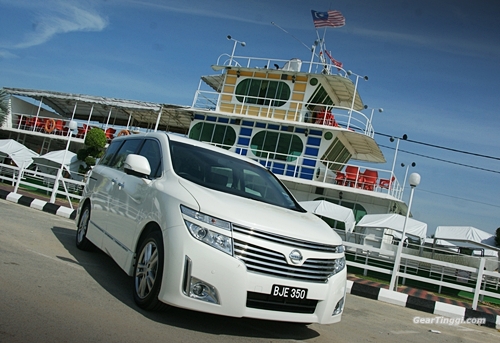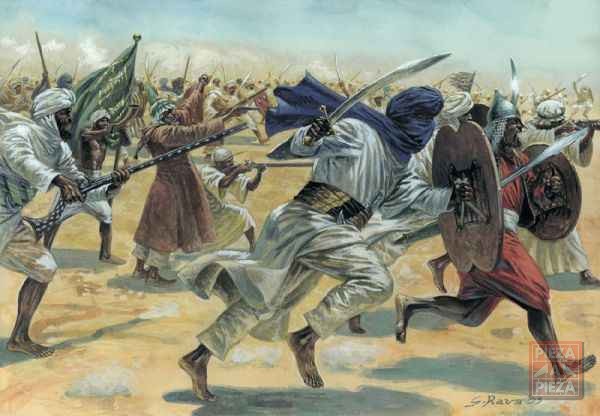Cameron Highland
Cameron Highlands
Cool down (right down) and huddle around the camp fire with a hot cocoa. By South East Asian standards the Cameron Highlands are very cool indeed, averaging 23 C by day and a chilly 10 C by night. This place is certainly a break from the norm and a great place to see Malaysians holidaying and enjoying their country’s more wintry activities.
Set over a number of small towns the hill stations are around 1,500 meters above sea level and boast clean crisp air and photo opportunities to match any in Asia. Brilliant greens and flowing bolder clad rivers jostle for the eyes attention. The area has been a resort of sorts since the 1920′s, when homesick British colonials used the hills to cool off at weekends. Amongst the hills you will spot decadent British Colonial Mansions with their white walls and wooden beams, complete with roaring log fires, quaint gardens and there’s even a golf course – what else would you expect for a rich white man’s playground?
The region is famous for two things, other than the cool air; strawberries and tea! Expect to find the former in cartoon form attached to every type of trinket from woolen hats to cutlery in all but the very classiest of outlets and the latter on sale in abundance. The tea plantations are as striking a feature as any of the less cultivated natural sites, and a tour will teach you a bit about where your cuppa comes from and the history attached to each brew. The highlands also offer a chance to see the worlds largest flower, the red and smelly ‘rafflesia’ and there is some great, if muddy, trekking.
The area’s locals are friendly, relaxed and accommodating, all the more reason to pick up a bit of the lingo; remember Apa Kabar (how are you), Terima Kasih (thank you) and Selamat tinggal (good bye) to make a good impression.
So, what are you waiting for? Pack a jumper and hit the hills!
Places to stay
Tanah Rata is the backpacker hub of the Highlands, with a number of budget accommodation options spread throughout the little town. With such a small area to cover it is worth taking a stroll to check both quality and price are in line with the competition. A bit of haggling skills may knock a few Ringgits off your bed for the night. You can get a room for as little as RM15 here, but don’t expect luxury. Rooms can be cold and a tad damp – if you have not brought your own make sure blankets are included in the room rate.
The town is essentially made up of the main road, Jalan Pasar (known locally as Main Road) and it’s offshoots. The buildings hark back to colonial times with balustrades adorning the fronts of many. An old convent school sits on a hill at one end of the road and past it rolling mountains can be seen through the mist. Brinchang is yet smaller than Tanah Rata and built on a fairly steep slope further up the main highway. The entrance to the town is marked by an ornate Hindu temple. Accommodation tends to be a little more upmarket in and around Brinchang, with some large hotels in the vicinity. Located further into the Highlands, Brinchang is closer to the plantations and is the origin of a many of the best treks in the area.
Things to do
- Tea Plantations: The famously expansive and elderly tea plantations of the highlands lend themselves to a half days tour. Rolling hills criss crossed with trademark veins run like crazy paving beyond the horizon and make for some incredible photo opportunities. Take a tour of one of the original factories, still using ancient methods of production and sit in the obligatory café supping some of the celebrated beverage and admire the view. Spot workers slicing the ripe leaves from the bush tops in the unique perpetual harvest.
- Pick strawberries: A most English pastime! Pick your own strawberries or simply grab a punnet and enjoy one of South East Asia’s less tropical fruits. The strawberry farms are littered with merchandise as well as preserves, juices and biscuits all in honour of the little red berry. You can get strawberry and cheese on toast, strawberry pie, strawberry smoothies, strawberry cake, even strawberry tea!
 The lush green landscape of the Cameron Highlands, dotted with strawberry fields
The lush green landscape of the Cameron Highlands, dotted with strawberry fields
- Hiking: Gunung Brinchang is the 2nd highest peak in the Cameron Highlands and offers great views for relatively little effort. Hike a mere 3km from Brinchang to the summit. The path is not particularly tough, although it maybe slippery during the wet season. The views are certainly reward enough to make up for any exertion and the short walk takes tourists to 2,000 meters above sea level. There are numerous other hiking routes heading off to one of two waterfalls or the surrounding peaks. Far longer and more strenuous hikes can be organised with the help of local tour operators. Remember to haggle hard and get what you have paid for!
- Ponder an unsolved mystery: The Cameron Highlands are the location of a long investigated missing person case. The American entrepreneur and Thai silk magnate, Jim Thompson famously disappeared here on Easter Sunday in 1967 whilst trekking in the highlands. Some say that he was eaten by a tiger, said to roam the hills here 50 years ago, others say that he was kidnapped and murdered or fell into an aboriginal animal trap erected by the native people (the Orang Asli) who then buried him when they found what had happened. The mystery remains unsolved to this day.
- The largest flower in the world: The ‘Rafflesia’ is to be found within a short drive and a few hours hike of Tanah Rata. The Rafflesia, otherwise (and less delicately) known as the ‘Corpse Flower’ lets off a fairly strong odour of rotting flesh and is by no means a giant rose. The flower is actually a fungus and is extremely rare, occurring in only a few places in South East Asia (also Khao Sok National Park in Thailand). Catching one in bloom, lasting a period of only 10 days, is largely a matter of luck, although visiting the highlands in the wetter season should ensure budding botanists are not disappointed.
- Butterfly farm: It might not sound too thrilling to those not versed in the quiet art of Lepidoptery (the collecting of butterflies) but bear with the little farm. Ten minutes drive from Tanah Rata, the butterfly farm has a huge range of what on first glance appear to be flying flowers and a large collection of other beasties native to the region, including lizards, spiders, enormous beetles and a nest of tortoise.
 One of the colourful residents of the Butterfly Farm
One of the colourful residents of the Butterfly Farm
- Local culture: The Orang Asli (literally meaning ‘original people’) are the indigenous people of the surrounding forest and high jungle. Trips can be organised on the main street in Tanah Rata to visit a local village and explore native pre-colonial heritage. Famous hunters, the Asli historically used blow pipes tipped with snake poison to bring down prey in the dense flora, and will now happily pass this skill on to backpackers!
- Shopping: Nestled in between the various restaurants and tour operators the backpacker will find no shortage of shops stocking souvenirs ranging from blowpipes to strawberry scented slippers.
- Eating: The food on offer in Tanah Rata is at times exceedingly cheap and always impressive. The heart of the small town is home to two competing Indian canteens. Both offer wonderful authentic Dosa and tandoori, however we can recommend the humble roti canai as best cheap eat! Widely eaten for breakfast, roti canai is available all day and immensely enjoyable as a snack around the clock. Chinese food also does well with a number of simple restaurants dotting the streets. For local food, look towards the steam boats, pouching raw ingredients at the table makes for a very sociable evening when mixed with a couple of bottles of Tiger Beer. And don’t forget, whilst dining in the Highlands it is a tourist ‘must do’ to have tea and scones, and imagine the area as was, under British rule.
 The tasty local delicacy, Roti Canai
The tasty local delicacy, Roti Canai
- Bars: in Tanah Rata there are only a couple of watering holes, find one with an open fire for a bit of atmosphere, expect to be home and warm by midnight. Brinchang’s offerings are even slimmer. This makes the highlands a great place for that most illusive of things – a DETOX!
Getting there
The area is well serviced by private coaches and mini buses as well as a local bus system that links the various sites within the highlands. Direct private buses run from George Town and KL as well as from the East coast. Public options will terminate at Tapah. The Mountains are at their wettest during the North East monsoon (Nov to Mar), however this does not need to impact upon a visit as part of the area’s charm is to be found in the cool damp air.
Where to go next?
Located just three hours South of George Town, and three hours North of KL, the Malaysian Peninsular is your oyster!
- Kuala Lumpur: Malaysia’s vibrant and multi-cultural capital is just a five-hour (windy) bus ride away for shopping malls, international restaurants, cinemas and trendy bars.
- Perhentian Islands: Warm up on some of Malaysia’s best beaches in the tropical Perhentian Islands. White sandy shores, great snorkeling, diving and laid-back beach bars are the ingredients for the perfect backpacker getaway.
- Taman Negara: Head inland to the enchanting Taman Negara National Park. Here you will encounter some of the world’s oldest jungle, hiding creatures great and small, as well as winding rivers and fascinating pre-colonial culture.
Written by Tim Goodson
Photos by Emma Lovesey


















 Komen
Komen RM370 untuk 10 keping... pelbagai corak dan warna selain gambar juga ada.
RM370 untuk 10 keping... pelbagai corak dan warna selain gambar juga ada.







































